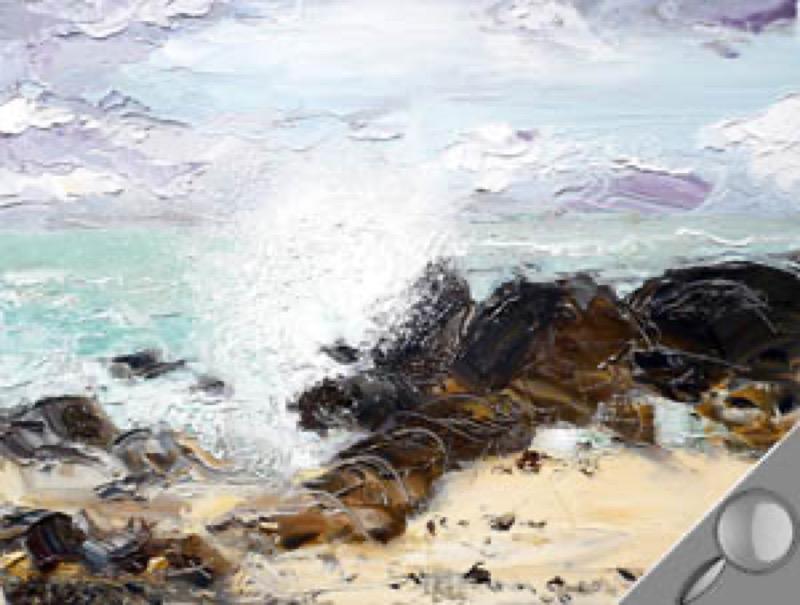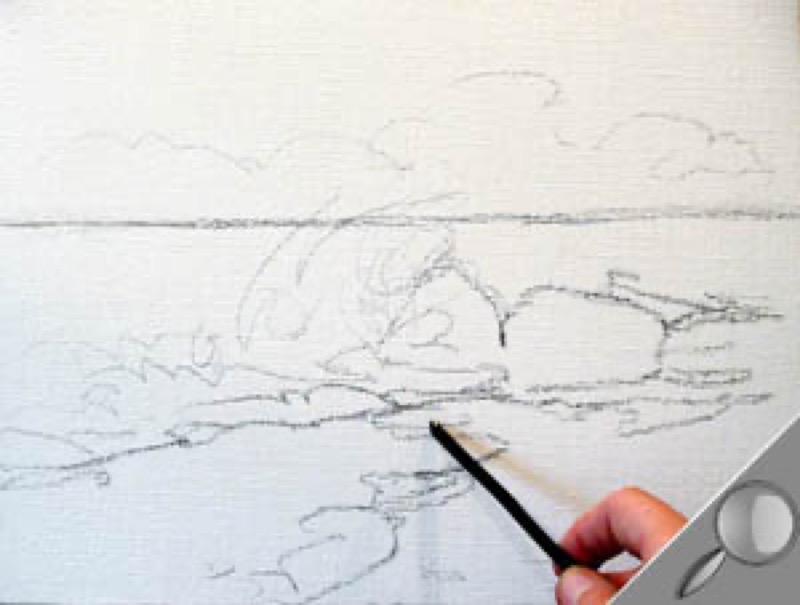
Time of execution: 4 hours Drying time: 6 months Level: difficult Artist: Delphine Priollaud-Stoclet
Materials
- Medium: Artcréation cotton canvas mounted on frame
- Colors: Pebeo Huile Fine XL
Cadmium yellow, cerulean blue, ultramarine blue, magenta, sap green, yellow ocher, raw umber, burnt umber, Payne's gray, black, titanium white
- Accessories: rectified spirits of turpentine, White Spirit, bleached linseed oil, Courtrai siccative
- Pencils and paintbrushes: 1 charcoal, 2 flat boar bristle brushes (Pebeo), 1 medium painting knife (Pebeo 3026), 1 Fine Touch Palette Knife (Talens 3007)
- Accessories: 1 kneaded eraser, 1 natural sponge, 1 palette, 1 pipette, 4 cans (for holding additives while working), 2 rags








